Just in case you feel that using Periodic Error Correction (PEC) is too much trouble, here is pictorial evidence of just how effective it is. These images were taken with my f/8 8" Newtonian with a 2X barlow, giving an effective focal length of 128". The scope is on an equatorial mount so all the tracking is on the RA (az) axis. The Dec axis was given a fixed drift during the exposures. Each image was 60 sec, long enough for a full PEC cycle.
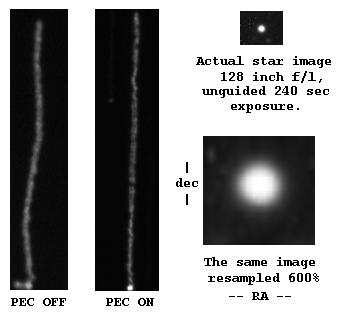
The following describes the steps required to analyze PEC data and create a PEC.DAT
file. The data are acquired by using the PEC function of Mel Bartels' Scope.exe program.
After taking several runs of guide data import the data into your spreadsheet program.
(Note: The newer versions of the program synchronize the indices; Thanks Mel.)
The data should look something like this:
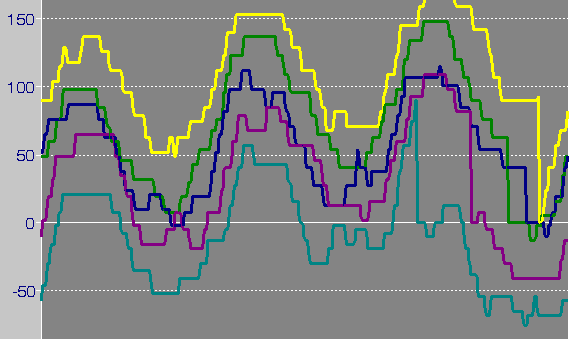
The next step is to take the arithmetic average of the data for each index
point.
The averaged data will look like the heavy red trace:
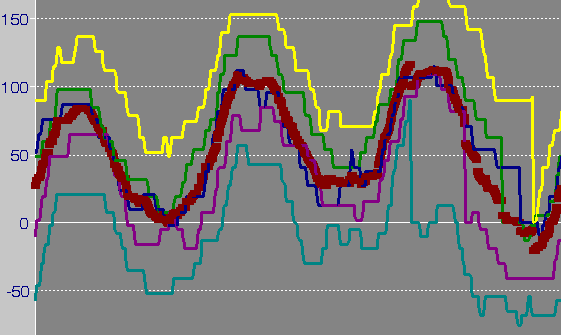
The data can be further smoothed by taking a running average across the set
of averaged data.
The running average will probably require a width of 30 or more points. This
width smooths the data well without serious distortion of the curve, as seen in the following:
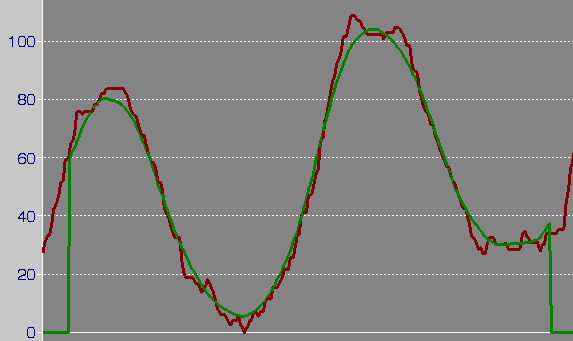
However the running average will have the effect of clipping the amplitude of the PEC "wave".
[After centering the wave amplitude on zero (by adding or subtracting a constant to balance the maximum and minimum around zero, you can multiple each value by a small factor to restore the "clipped" high/low, see below.]
For a running average with a data width of 40 points, you will have to add 20 data
points at the beginning and 20 at the end of your data set. To accomplish this, copy data for points 0 thru 19 to the end of the set, labeling them with index numbers 200 thru 219. Then insert the data points for indices 180 thru 199 at the top of the data set, labeling these with index numbers -20 to -1
The newer versions of Scope.exe automatically correct the PEC data for drift, so the following step is not normally needed.
Looking at the data presented above, it is apparent that there is some drift in the tracking due to the inaccuracy of the scope alignment or other tracking error. This drift must be removed. If it were to be added to the PEC data, it would cause a discontinuity at the end of each cycle. Furthermore the actual PEC would be distorted by the drift.
Examining the data, it can be seen that from one peak to the next and from one minimum to the next, the drift is consistently 24 counts per cycle.
The drift for each data point is the drift per cycle divided by 200 (assuming
200 steps per cycle). To eliminate the drift add (or subtract as required) this
amount multiplied by the index # from each data point. The equation for this
example is:
where Indx# is the consecutive index for Data.
NOTE: You need to adjust the data for drift BEFORE creating index values -19 to -1 and 200 to 220.
The result for drift correction appears as follows:
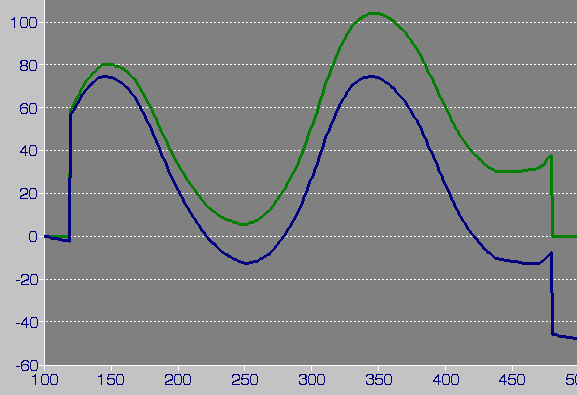
The data now will work, but some final adjustments can be made.
First adjust the PEC data so the absolute values of the max and min are
equal, i.e. balance the data around zero. This is done simply by adding (or
subtracting) the same constant value to each data point such that the absolute
value of the minimum equals the value of the maximum; thus:
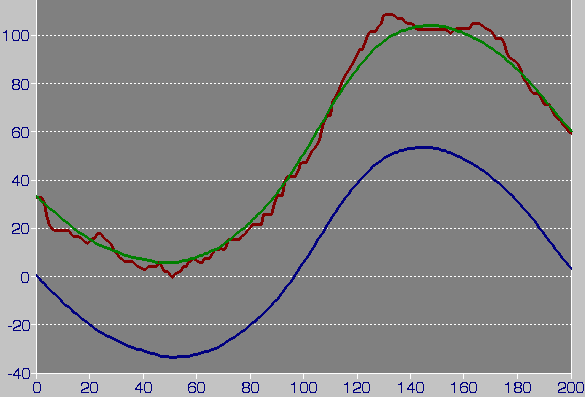
The data can now be "stretched" to undo the "clipping" caused by
averaging the data.
In the above data it appears that the peak of the
curve is about 4 counts below the averaged data peak. The amplitude of the
curve is +/- 40, so multiplying each data point by 1.1 will make the maximum
(and minimum) data values 44, more closely matching the original data.
You can now create the PEC.DAT file. As stated in the SCOPE.exe manual, this is a simple text file with the index number and its corresponding pec value listed line by line from 0 through 199 for each axis, the dec axis is listed then the az axis is listed.